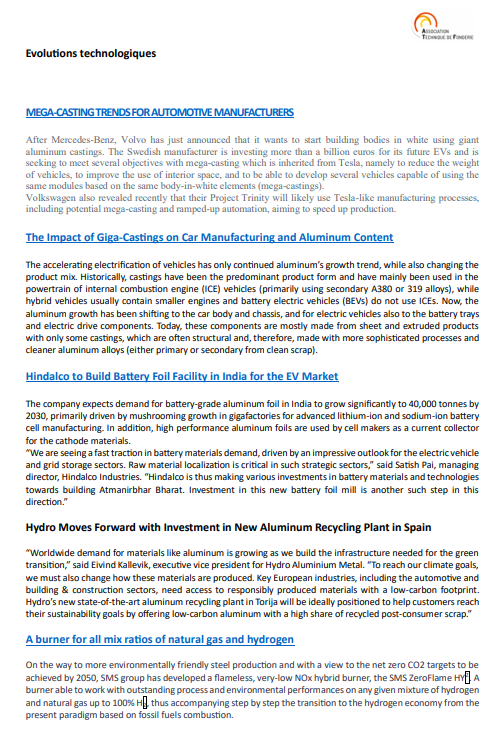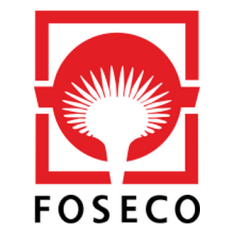
MEGA-CASTING TRENDS FOR AUTOMOTIVE MANUFACTURERS After Mercedes-Benz, Volvo has just announced that it wants to start building bodies in white using giant aluminum castings. The Swedish manufacturer is investing more than a billion euros for its future EVs and is seeking to meet several objectives with mega-casting which is inherited from Tesla, namely to reduce the weight of vehicles, to improve the use of interior space, and to be able to develop several vehicles capable of using the same modules based on the same body-in-white elements (mega-castings). Volkswagen also revealed recently that their Project Trinity will likely use Tesla-like manufacturing processes, including potential mega-casting and ramped-up automation, aiming to speed up production. The Impact of Giga-Castings on Car Manufacturing and Aluminum ContentThe accelerating electrification of vehicles has only continued aluminum’s growth trend, while also changing the product mix. Historically, castings have been the predominant product form and have mainly been used in the powertrain of internal combustion engine (ICE) vehicles (primarily using secondary A380 or 319 alloys), while hybrid vehicles usually contain smaller engines and battery electric vehicles (BEVs) do not use ICEs. Now, the aluminum growth has been shifting to the car body and chassis, and for electric vehicles also to the battery trays and electric drive components. Today, these components are mostly made from sheet and extruded products with only some castings, which are often structural and, therefore, made with more sophisticated processes and cleaner aluminum alloys (either primary or secondary from clean scrap).




